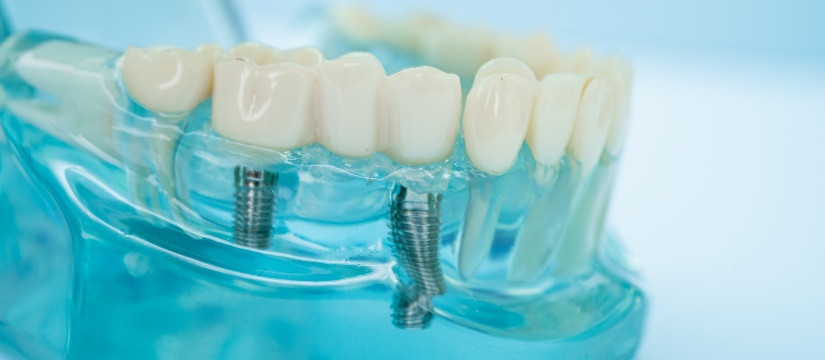When it comes to replacing multiple missing teeth, dental implants offer one of the most reliable and long-lasting solutions. While many people associate dental implants with replacing a single tooth, they can actually be used to restore several teeth or even an entire arch. Whether you’ve lost multiple teeth due to injury, decay, or gum disease, dental implants may provide the stability and functionality you need.
Here’s everything you need to know about how dental implants can replace multiple teeth and what options are available for those considering this treatment.
How Dental Implants Work for Multiple Teeth
Dental implants are designed to function like natural tooth roots, integrating with the jawbone to provide a stable foundation for artificial teeth. When multiple teeth are missing, dental implants can support individual crowns, implant-supported bridges, or even full-arch dentures. These options can restore both the appearance and functionality of your smile.
1. Single Implants for Each Missing Tooth
In cases where several teeth are missing, one option is to place a single implant for each missing tooth. This method offers the most natural look and feel but can be costlier and more invasive since it involves multiple surgical sites.
- Pros: Each tooth has its own implant, ensuring maximum stability and durability. The implants are independent, which means if one implant fails, it does not affect the others.
- Cons: This is often the most expensive option and may require a longer recovery period since multiple implants are placed.
2. Implant-Supported Bridges
For those missing several teeth in a row, implant-supported bridges provide an excellent solution. Instead of placing an implant for each missing tooth, only two or more implants are used to support a bridge of artificial teeth.
- Pros: Fewer implants are required compared to individual implants for each tooth, reducing cost and recovery time. Implant-supported bridges still provide great stability and prevent the surrounding teeth from shifting.
- Cons: If one of the supporting implants fails, the entire bridge may need to be replaced. Implant-supported bridges are also more challenging to clean than single implants.
3. All-on-4 or Full-Arch Implants
Patients who need to replace an entire arch of teeth can benefit from the All-on-4 treatment or full-arch implants. This involves placing four to six implants strategically in the jawbone to support a full arch of teeth.
- Pros: This method is more cost-effective for full-mouth restoration and typically requires fewer implants. Patients experience a quicker recovery time compared to placing individual implants for each tooth.
- Cons: This treatment option may involve more significant surgery, especially if the patient requires bone grafting or sinus lifts before the implants can be placed.
Frequently Asked Questions (FAQ)
Can dental implants replace more than one tooth?
Yes, dental implants can replace multiple teeth, whether it's two teeth, several in a row, or even an entire arch. Options include individual implants, implant-supported bridges, and full-arch restorations like All-on-4 implants.
How many implants are needed to replace multiple teeth?
The number of implants needed depends on how many teeth you are missing and the type of restoration used. For example, an implant-supported bridge may require just two implants to support a three-tooth bridge, while full-arch restoration typically requires four to six implants.
Is it possible to replace all of my teeth with dental implants?
Yes, it is possible to replace an entire arch or all of your teeth using dental implants. A common approach is the All-on-4 procedure, where four to six implants support a full arch of teeth.
Are implant-supported bridges as strong as single implants?
Implant-supported bridges are very stable and can effectively restore function, but they rely on fewer implants than individual tooth replacements. Proper care and maintenance are necessary to ensure the bridge remains strong over time.
How long does it take to heal after multiple dental implants?
Healing times vary depending on the number of implants and the patient’s overall health. On average, it can take 3 to 6 months for implants to fully integrate with the bone, after which the final restorations are placed.
Can I get dental implants if I’ve lost bone in my jaw?
Yes, even if you've experienced bone loss, you may still be a candidate for dental implants. Bone grafting procedures can help rebuild the jawbone to provide a stable foundation for implants.
Are multiple dental implants more expensive than other tooth replacement options?
Multiple dental implants are generally more expensive upfront than options like dentures or bridges. However, they offer greater durability, stability, and long-term savings since they don’t require frequent replacement.
What are the benefits of using dental implants over dentures for multiple teeth?
Dental implants offer superior stability, allowing you to eat, speak, and smile with confidence. They also help preserve jawbone density, which prevents the "sunken" facial appearance often associated with long-term denture use.
How do I care for multiple dental implants?
Caring for dental implants is similar to caring for natural teeth. Regular brushing, flossing, and dental check-ups are essential to maintaining the health of your implants. Special tools like water flossers or interdental brushes may help clean around bridges or All-on-4 restorations.
How long do dental implants last when replacing multiple teeth?
With proper care, dental implants can last 20 years or more. They are a long-term investment in your oral health, and many patients enjoy a lifetime of function and aesthetics from their implants.
Dental implants offer a versatile and durable solution for replacing multiple teeth, whether you're missing a few teeth or an entire arch. With options ranging from single implants to implant-supported bridges and full-arch restorations, implants can provide a stable, long-lasting alternative to traditional dentures or bridges. By working closely with your dentist, you can find the right implant solution to restore both the function and appearance of your smile for years to come.
 Clinic Booking
Clinic Booking


 No Record
No Record